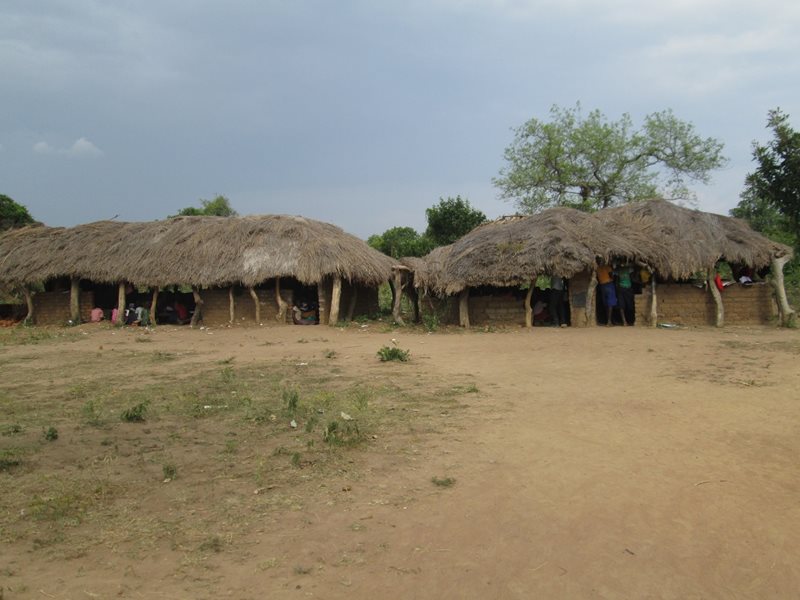Written by World Vision Uganda; Edited by Kaija Hutteri and Katie Hackett
Barriers to school: 10km and a swamp
Getting a basic education was a challenge for boys and girls in the rural community of Asamuk. The nearest government school was 10 kilometres away on the other side of a swamp. During the rainy season, parents would have to sacrifice some of their limited income to pay someone to transport their children across the swamp in a boat. This expense, and the long walk, made education unappealing to many families.
“Parents and children were getting demoralized,” says Emuli, a Grade 6 student. “As a result, girls and boys were not attending school regularly.”
Community takes action
Because of these challenges, the community decided to open a primary school of their own. They built four classrooms with walls of mud and thatched roofs.
Students like Emuli were happy to be able to attend a school in their village, but learning in cramped quarters without the benefit of desks or textbooks was not easy. Some classes took place under trees to relieve classroom congestion.
Sanitation was also an issue at the school, which had a single pit latrine. Boys and girls lacked privacy and were exposed to the harsh sun or heavy rains while relieving themselves.
 The mud and thatch classrooms were the beginning of the solution, but didn’t provide adequate learning conditions. Photo: World Vision
Better facilities lead to increased attendance
The mud and thatch classrooms were the beginning of the solution, but didn’t provide adequate learning conditions. Photo: World Vision
Better facilities lead to increased attendance
The generous support of sponsors made it possible to improve learning conditions for these students, many of which do not have sponsors. The school received a brand-new block of three classrooms in 2016, followed by an additional block of four classrooms the next year. Comfortable learning conditions make it easier for children to focus on their lessons and encourages regular attendance, even during harsh weather conditions.
The school in Asamuk also received desks, textbooks and proper latrines with separate areas for boys and girls. Children no longer study outside under the trees, and the classroom ratio has improved from 80 students per classroom to 40 students per classroom.
The new facilities have attracted more pupils and given parents confidence in the quality of education being provided. The number of students enrolled doubled from 205 to 420 since construction of the new classrooms began. The school management committee is determined to keep girls and boys attending regularly and support them to perform well in their studies.
Through the support of child sponsors, many more children in Asamuk are learning in comfortable conditions close to home.
We want to hear from you! If you have questions or comments, please email
info@worldvision.org. Thank you for your partnership!